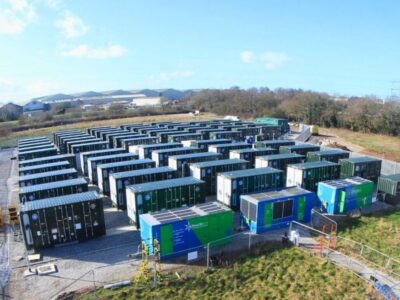Recent data reveals a compelling economic case for expanding renewable energy investments in Utah. Between 2007 and 2023, according to Utah Clean Energy, sustainable energy development has generated $4.1 billion in construction and investment, $6.3 million in lease payments to local landowners, including farmers, and $24.6 million in property tax revenue. These are not just statistics—they represent real dollars flowing into Utah communities and creating tangible opportunities for businesses and workers.
The investments are in a mix of clean energy sources and The Salt Lake Tribune Editorial Board recently argued that the free market speaks clearly. Coal-powered energy is declining rapidly across America as businesses and utilities recognize the economic advantages of alternatives. Utah’s energy landscape has already transformed dramatically, with coal’s share dropping from 75% in 2015 to 46% in 2023, based on data from the U.S. Energy Administration. Even more telling is that 93% of all new energy capacity added in Utah since 2015 has been solar.
The same trend is appearing on the national scale, with wind and solar accounting for 17% of the country’s electricity mix in 2024 and coal falling to 15%, marking the first time the former generated more electricity than the latter. This shift is not happening because of government mandates—it is happening because the market recognizes a good investment when it sees one.
For Americans who value energy independence and innovation, advancing renewable technologies offers a path to reduce dependence on foreign energy sources while creating jobs at home. The editorial board points out that support is increasing across the political spectrum and even Texas has become a national leader in solar and wind energy production precisely because it recognized the economic opportunity.
The editorial board said, “A stubborn and unthinking devotion to using fossil fuels to power Utah’s energy future can only lead to our state’s economy becoming as dry and dead as all those dinosaur bones.” Specifically, the board added, governmental interference in private efforts, “pushing back on moves to renewable energy and clinging to dirty and ever-more-expensive coal, have hobbled what should be Utah’s opportunity to lead the way on moving to clean and abundant energy.”

Photo Courtesy Utah Clean Energy
Notably, the Inflation Reduction Act (IRA) created tax incentives that have accelerated private investment in energy innovation. However, the tax credits are now under threat of federal rollbacks. “That would be a bad idea, and Utah’s all-Republican congressional delegation should oppose such backward steps,” the editorial board pointed out.
According to analysis from the likes of the Wilkes Center for Climate Science and Policy at the University of Utah, the board noted these incentives are projected to boost Utah’s GDP over the coming decade. Removing these incentives now would likely “cost the state jobs because it increases our energy costs,” outcomes that would hamper Utah’s competitiveness in attracting new businesses and retaining existing ones.
The business case for renewable energy does not require environmental arguments. “The plummeting cost of solar energy infrastructure and the market’s overall move away from coal — far beyond Utah’s poor power to add or detract — are reason enough,” the board wrote. For Utah to remain competitive and maximize economic growth potential, its leaders should embrace these market realities rather than resist them.
This article was created on May 6, 2025 with the assistance of the generative artificial intelligence (AI) tool Claude 3.7 Sonnet, using the linked company websites, press releases, reports, or external media coverage as inputted source material. It was then reviewed, fact-checked, and edited by one or more team members to ensure factual accuracy and consistency with editorial standards before publication. While we strive for precision, reliability, and quality, readers should be aware that AI-generated content may have limitations in contextual awareness and nuance and may not be completely unbiased, consistent, error-free, or up-to-date. We recommend using this content only for informational purposes, as well as independently verifying it or conducting further research to supplement it. If you notice any inaccuracies or have concerns about this content, please contact our research manager at greg@consensus-digital.com.





